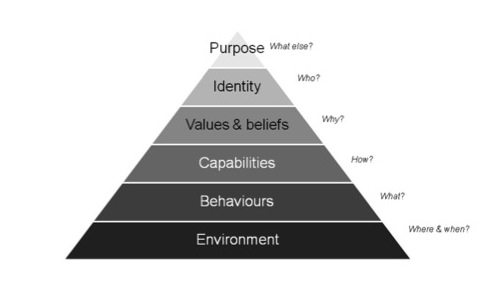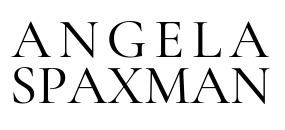 When I coach someone through any kind of change, whether changing leadership style, changing careers or anything else, I start by looking under the hood. In coaching this means to look at the system of beliefs that is creating the current environment and can therefore be adjusted in order to create a new environment.
When I coach someone through any kind of change, whether changing leadership style, changing careers or anything else, I start by looking under the hood. In coaching this means to look at the system of beliefs that is creating the current environment and can therefore be adjusted in order to create a new environment.
Robert Dilts‘ model of the Logical Levels describes how everything we experience can be viewed from a number of different levels. Changes made at higher levels in the model have an impact on the levels below. But higher levels are also harder to change. Most frequently, we change our world at the lower levels, by changing our environment directly, by changing our behaviours and by building our capabilities and skills in order to do so.

Logical Levels of Change (from Elisabeth Goodman’s Blog)
If we can change our beliefs, we can overhaul any aspect of our lives.
Our beliefs define us, and they define our view of the world to such an extent that they are inseparable from the world we live in. Our beliefs are the sum total of all the words we use to describe our world, both consciously and unconsciously. And we also have beliefs that have never been put into words.
As an example, in an NLP Timeline Therapy session, I once discovered that I had a belief that working alone in the kitchen is dangerous, in certain circumstances. This was a very naive and exaggerated belief that I had made up when I was a very young girl based on just one quite ordinary incident of a family conflict in the kitchen. The belief had remained completely unconscious well into my adult life, and made me irrationally irritable about kitchen chores. It has been a great relief to change this belief and give myself back the freedom to work calmly and happily in the kitchen whenever I like!
Changing beliefs gives us a powerful new capacity to manage ourselves through change and challenge. And there are two main steps to changing beliefs: identifying and replacing.
Simply identifying hidden beliefs can be hugely powerful. If you can bring your attention to the stream of thoughts that runs in the background of your mind, probably almost unceasingly, then you can dip into the flow of beliefs that are driving you. Coaching can help in identifying unwanted beliefs by shining a light on thinking patterns that you had not noticed before and by acting as a mirror to reflect the beliefs that are expressed in the way you speak and the way you think.
And coaching can also help in replacing unhelpful beliefs with more effective ones. Metaphors and images can help with this process. As an example, a client of mine used the symbol of a backpack to help him create new ways of thinking about his career. He was heading for retirement and eager to take a step-by-step process to release work to his successor gradually while retaining the aspects of his work that most suited him in the later stages of his working life. He needed to replace his very disciplined thinking about getting work done, with a more flexible approach. He selected the specific things he wanted to keep and put them in his imaginary backpack, while leaving certain old ways of working behind.
As the award-winning cell biologist Dr. Bruce Lipton has explained, the vast majority of our beliefs are unconscious and they cannot be changed only within the conscious mind. We need to practice new beliefs, repeating them until they become habitual. This takes effort, but the good news is that it is possible. And we are only just beginning to understand the impact we can have on our abilities and lives through deliberate efforts to change our beliefs.
Are you upgrading your beliefs? If you’re considering overhauling your leadership style or career path, I would love to help you open the hood.
